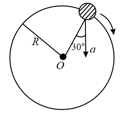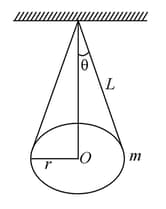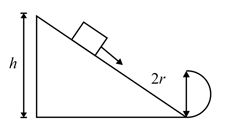EASY
MHT-CET
IMPORTANT
Earn 100
A particle moves along a circle of radius with constant tangential acceleration. If the velocity of the particle is at the end of the second revolution after the revolution has started, then the tangential acceleration is
(a)
(b)
(c)
(d)
50% studentsanswered this correctly

Important Questions on Circular Motion
MEDIUM
MHT-CET
IMPORTANT
A particle of mass moves along a circle of radius with a constant tangential acceleration. What is the magnitude of this acceleration, if the kinetic energy of the particle becomes equal to by the end of the second revolution after the beginning of the motion?
MEDIUM
MHT-CET
IMPORTANT
Two stones of masses and are whirled in horizontal circles, the heavier one in a radius and the lighter one in radius . The tangential speed of lighter stone is times that of the value of heavier stone when they experience the same centripetal force. The value of is,
EASY
MHT-CET
IMPORTANT
In the given figure, represents the total acceleration of a particle moving in the clockwise direction in a circle of radius at a given instant of time. The speed of the particle is,

EASY
MHT-CET
IMPORTANT
A body of mass is tied to one end of a string and is revolved in a horizontal circle of radius with a speed of . Assuming that the effect of gravity is negligible, then linear velocity, acceleration and tension in the string will be,
MEDIUM
MHT-CET
IMPORTANT
A particle of mass is suspended from a ceiling through a string of length . If the particle moves in a horizontal circle of radius as shown in the figure, then the speed of the particle is

MEDIUM
MHT-CET
IMPORTANT
A block follows the path as shown in the figure from height . If radius of circular path is , then relation holds good to complete full circle is

MEDIUM
MHT-CET
IMPORTANT
A body initially at rest and sliding along a frictionless track from a height (as shown in the figure) just completes a vertical circle of diameter . The height is equal to

EASY
MHT-CET
IMPORTANT
A particle moves in a circle of radius with constant speed and time period . The acceleration of the particle is
